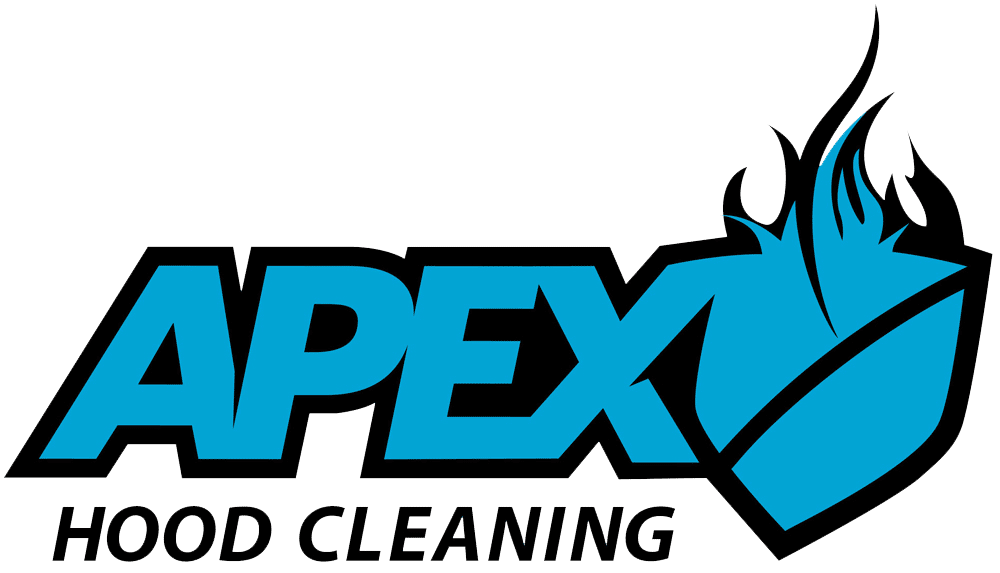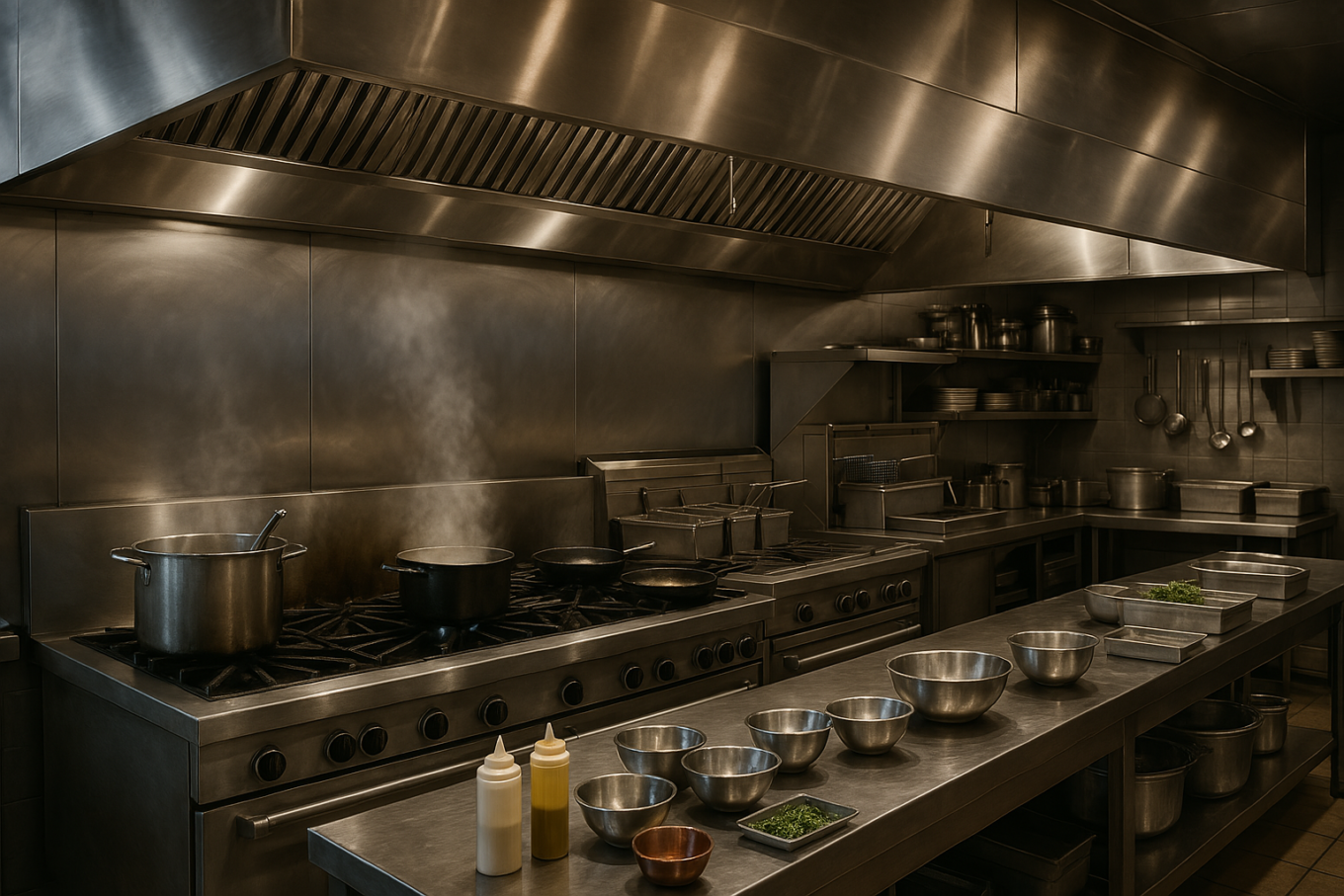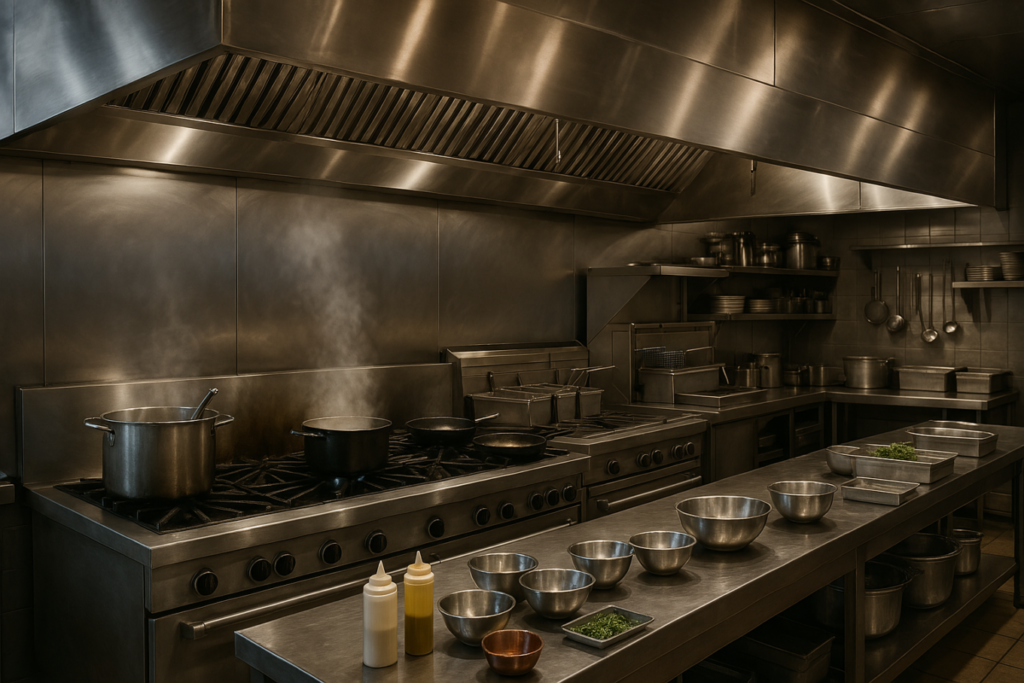When you think of restaurant hood repair, fire safety is likely the first thing that comes to mind — and for good reason. A malfunctioning kitchen hood can pose serious fire risks, especially when grease builds up in the system. But what many restaurant owners and managers overlook is the broader impact of hood system issues on day-to-day operations.
At Apex Hood Cleaning, we’ve seen firsthand how minor hood problems — left unchecked — can snowball into costly emergencies. Let’s explore how a strategic approach to restaurant hood repairs not only protects your business from fire hazards but also boosts efficiency, reduces downtime, and protects your bottom line.
Beyond Fire Safety: The Hidden Costs of Delaying Hood Repairs
Yes, safety is paramount — but kitchen ventilation issues can quietly affect almost every part of your operation:
- Employee Productivity: If your hood isn’t functioning correctly, heat and smoke can build up fast. This creates uncomfortable conditions for your staff, which can lead to slower service, increased fatigue, and even higher turnover.
- Higher Energy Bills: A faulty exhaust system forces your HVAC to work harder, especially during peak service hours. This often leads to significantly higher energy costs month over month.
- Odors & Noise: Inefficient hoods may not fully remove smoke or food odors, which can leak into the dining room and disturb guests. Some faulty systems also produce excessive noise, disrupting both the kitchen and front-of-house experience.
- Surprise Health Code Violations: Health inspectors often check kitchen ventilation systems. A small issue, like a dirty or broken component, can lead to failed inspections, fines, or even forced temporary closures.
Emergency Repair vs. Strategic Maintenance: A Cost Comparison
It’s tempting to take a “wait until something breaks” approach — especially during busy seasons. But emergency hood repairs often cost more, both in service fees and lost revenue due to kitchen downtime.
Here’s how the two approaches compare:
Emergency Repair
- Unpredictable timing
- Higher repair cost
- Risk of full kitchen shutdown
- Stressful and reactive
Strategic Maintenance & Repair
- Scheduled during off-peak hours
- Lower cost spread over time
- Minimal disruption to operations
- Proactive and planned
Investing in preventive hood system repairs can save thousands per year — not just in direct repair costs, but in avoided downtime and smoother operations.
The Most Repair-Prone Parts of a Restaurant Hood System
While every kitchen is different, there are several components that frequently cause trouble. Keeping an eye on these parts — or having them regularly inspected — can prevent emergencies:
- Fan Motors & Belts: The fan motors and belts in a kitchen’s exhaust system should be inspected regularly to ensure they are functioning properly. These components help remove smoke and heat from the cooking area, reducing the risk of fires.
- Dampers: Dampers are essential in controlling the flow of air and grease through the exhaust system. Regularly cleaning and inspecting dampers can prevent blockages that could lead to a dangerous backup of smoke and grease.
- Grease Containment Systems: Grease containment systems, such as grease filters and drip trays, are crucial in trapping and removing grease from the exhaust system. These should be cleaned regularly to prevent buildup that could lead to fire hazards.
- Control Switches & Wiring: Faulty switches or loose wires can cause the hood system to short out entirely — or worse, become an electrical hazard.
- Lighting Components: Hood lighting is often overlooked, but it’s critical for safety and visibility in the prep area. Burned-out or damaged lights are easy to repair — if caught early.
Tailoring Repairs to Your Type of Business
Not all commercial kitchens are created equal. Apex Hood Cleaning works with a wide range of food service operations across Portland and the Pacific Northwest. We understand that different environments lead to different repair needs.
- High-Grease Kitchens (e.g., burger joints, food trucks): More frequent motor strain, belt issues, and grease-related breakdowns.
- High-Heat Kitchens (e.g., wok stations, steakhouses): More wear and tear on fan components due to intense exhaust demands.
- Low-Grease Kitchens (e.g., bakeries, cafes): Fewer breakdowns, but still require regular inspections for buildup and airflow balance.
- Multi-Vent Locations (e.g., hotels, large venues): Require specialized attention to airflow distribution and synchronization between systems.
By choosing a repair provider that understands your industry, you can ensure repairs are prioritized based on real operational risks, not guesswork.
Key Hood System Upgrades to Consider
Advanced Grease Containment Systems: Modern grease traps and pans are designed to capture more grease before it enters the ductwork, reducing fire hazards and making routine maintenance easier. These systems often feature improved materials and removable components for easy cleaning.
High-Efficiency Hood Filters: Upgraded filters can significantly enhance air quality by capturing finer grease particles. They not only reduce cleaning frequency but also protect downstream components like fans and ductwork from damage.
Smart Exhaust Fans: Newer exhaust fans often include variable speed controls and smart sensors that adjust airflow based on cooking activity. These upgrades can help reduce energy usage, lower noise levels, and improve overall kitchen comfort.
Hinge Kits for Easy Maintenance: Adding hinge kits to rooftop fans allows for easier access during cleaning and repair. This upgrade simplifies compliance with NFPA 96 and reduces wear and tear on your fan systems during servicing.
A Smart Repair Timeline to Keep Your Kitchen Running Smoothly
Here’s a sample repair and inspection strategy that keeps your kitchen ahead of problems:
Monthly
- Check grease filters and containment trays
- Listen for unusual fan noises
- Test switches and airflow
Quarterly
- Professional inspection of motors, belts, and dampers
- Deep clean of ducts and hoods
- Repair minor issues before they escalate
Twice a Year
- Schedule a full system diagnostic with Apex
- Update maintenance logs for compliance
- Replace or upgrade parts showing wear
Frequently Asked Questions (FAQ)
How often should restaurant hoods be inspected for repair needs?
Most experts, including Apex Hood Cleaning, recommend monthly visual checks and professional inspections at least once per quarter. Kitchens with heavy grease output may need more frequent service.
What are signs that my hood system needs repair?
Common signs include unusual noises, decreased airflow, persistent odors, visible grease buildup, flickering lights, or a hood system that won’t turn on or off properly.
Is hood repair the same as hood cleaning?
Not quite. Hood cleaning focuses on removing grease and buildup, while repair involves fixing or replacing damaged or malfunctioning parts like fans, motors, switches, and wiring.
Can I handle restaurant hood repairs myself?
Basic maintenance like filter cleaning can be done in-house, but repairs should always be handled by trained professionals to ensure safety and code compliance.
Does Apex offer emergency hood repair services?
Yes! Apex Hood Cleaning offers 24/7 emergency services across Portland and surrounding areas.
Ready to Get Ahead of the Next Repair?
🔧 Book your repair risk assessment today
📞 Call us or Request a Quote Online
Let’s make your kitchen safer, cleaner, and more efficient — together.


